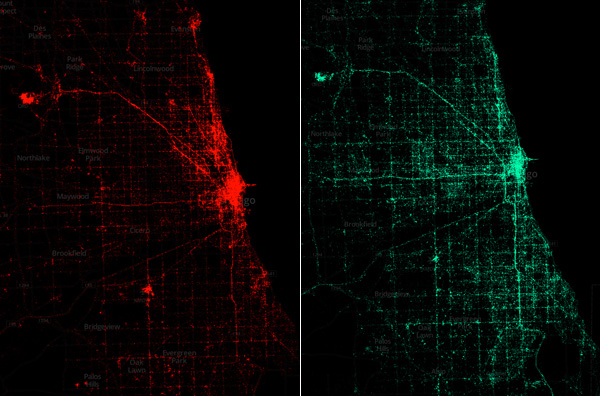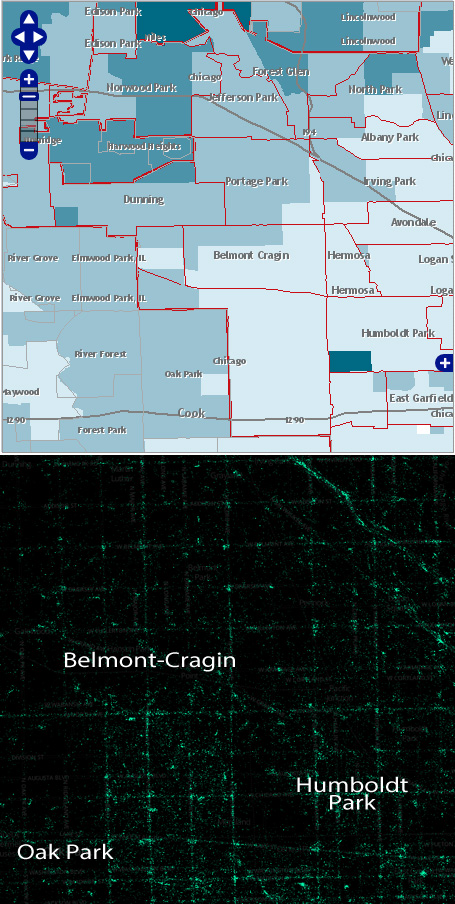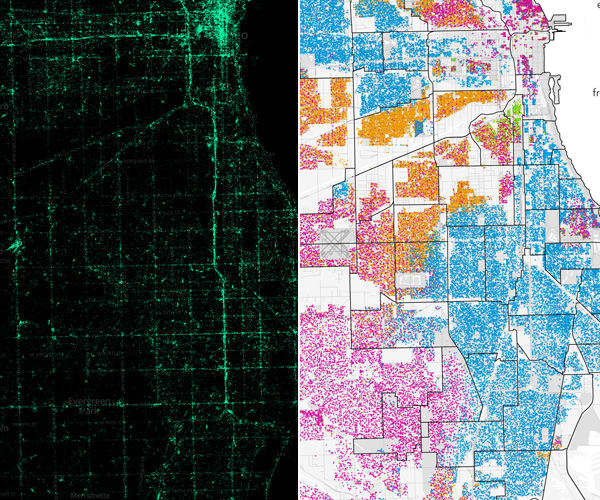Via Kyle VanHemert at Wired, the data mappers at MapBox have produced a fascinating map of the United States by Twitter usage, broken down by phone OS. Looking at Chicago, some old patterns emerge. Here's a broad overview, with some annotations on areas of heavier iPhone usage (red) compared to Android (green).

It appears that the use of Twitter on iPhones correlates not only with relative wealth, but also with age. It's concentrated heavily in the Loop, the northwest sides of the city along major diagonal thoroughfares, and colleges.
Here's a bird's-eye comparison of iOS vs. Android:

iPhone use falls off heavily west of Milwaukee Avenue. The spread of Android—which is available on many more phones, at lots of price points—is much broader.
It's also prevalent on the West and South sides, in places which seem to be younger (again, this is measured by Twitter use). Here's a section of the West side that includes Oak Park, Austin, and Belmont-Cragin, paired with projected median age (via Crain's) in 2013. There's a lot of Twitter activity in Austin on Android phones, not as much in the surrounding neighborhoods.

Austin is, comparatively speaking, a young neighborhood (light blue is 18-35; darker is 35-45, 45-60, and greater than 60). When you go north and east, the population gets older, more immigrant-heavy (more on that below), or both.
One more. Here's the South Side. Austin is in the upper-left-hand corner; Midway is at the center on the left edge. On the left is tweets sent from Android phones; on the right is a detail from Bill Rankin's dot map of race in Chicago. Each dot represents 25 people: blacks are represented by blue dots; whites by pink; Hispanics by orange; Asians by green dots.

Here, Twitter use runs along familiar racial lines, in the spokes Chicagoans are used to seeing. There's less use in the immigrant-heavy neighborhoods to the southwest (and older, white neighborhoods, such as those surrounding Midway); more use to the south and southeast, which you might expect from the combination of youth and native-born population. Technological adaptation follows cultural lines, and in Chicago those lines are inevitably distinct.



